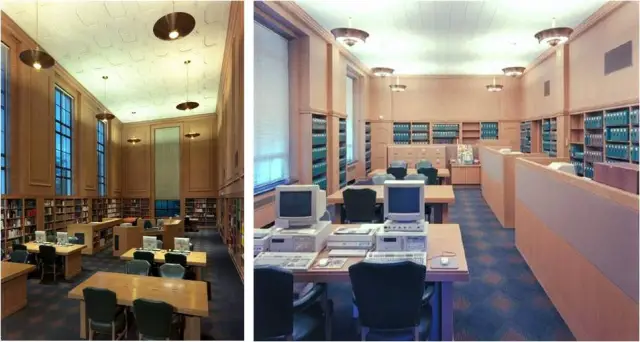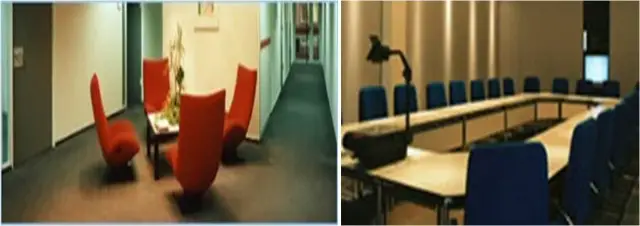- The illumination level in offices ranges for different offices such as 300lux for the general offices to 600lux for the drawing offices and business machine operation and 1000lux for work which requires greater visual effort.
- The lighting in the offices should be bright that is comfortable for the worker in the office.
- Glare index in offices should not exceed a value of 19. In order to achieve this degree of freedom of glare, light fittings must be designed to restrict the amount of light emitted sideways in the direction of the observer’s eyes.

- Fluorescent lighting is indicated for use in offices every where except where in individual offices personal preferences may be expressed for filament lighting.
- In small offices which the workers maintain themselves, filament lighting is used.
- The choice of lamp entirely depends upon the requirement of light in the particular office space, like drawing office, requires critical judgment of colour, the type of lamp known as ‘colour matching’ or ‘artificial daylight’ may be indicated.
- This lamp has some what lower luminous efficiency than the most efficient type of fluorescent lamp.

- In case of a draughts men, they require an adequate level of well distributed light over the whole of working plane which may be fully adjustable tilting drafting machine.
- The light in a draught men’s office should be free from glare, and supplemented by preferential lighting on his work.
- Office lighting plays a key role in creating a working environment that empowers people to function to the very best of their abilities.
- Productivity of the company rests on the capacity of the individual employees to work effectively; therefore offices today are designed to optimize performance.
- Lighting contributes to the physical comfort of the employees promoting a sense of well-being, safety and alertness. Lighting control is becoming increasingly important to offer flexibility and energy management.


Leave a Reply
You must be logged in to post a comment.